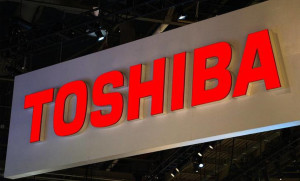 Toshiba Corporation has been caught cooking the books, overstating pre-tax profits by ¥1.5 billion over the last seven years. The scandal began with an inquiry by Japan’s market regulator, the Securities and Exchange Surveillance Commission, in February. Toshiba started its own investigation in May, and the committee issued its report in July.
Toshiba Corporation has been caught cooking the books, overstating pre-tax profits by ¥1.5 billion over the last seven years. The scandal began with an inquiry by Japan’s market regulator, the Securities and Exchange Surveillance Commission, in February. Toshiba started its own investigation in May, and the committee issued its report in July.
The company abused project accounting rules to hide expenses in its construction businesses. It understated the cost of parts sold to contract manufacturers in its computer business. And it failed to wrote-down obsolete inventory in its semiconductor business.
None of these tricks was very inventive; they are classics from the expense manipulation playbook. But at Toshiba there were no points awarded for originality, only penalties for failing to meet profit goals. And those penalties could be quite severe.
According to the investigating committee’s report, it was standard practice for Toshiba’s last three chief executives to issue impossible earnings “challenges” to subordinate business chiefs to make up for near-term profit shortfalls. Executives who failed to meet those challenges were disgraced, and their businesses were threatened with closure.
Pressure to meet goals is nothing new in business in Japan or anywhere else. So there is nothing really special about Toshiba in that regard. What is special is how comprehensive the breakdown in integrity at Toshiba was: every control against financial misreporting failed.
Starting at the top. The last three chief executives at Toshiba, Toshiba Hisao Tanaka, Atsutoshi Nishida, and Norio Sasaki, were all directly involved in hiding expenses. They were aware of and sometimes even approved of the bad accounting.
Toshiba’s Corporate Audit Division failed to find the fraud. The investigating committee reported, “…it rarely conducted any services from the perspective of an accounting audit into whether or not an accounting treatment was appropriate…” It focused on consulting services for business unit management instead.
The Risk Management Division was responsible for monitoring financial reporting controls and compliance at Toshiba. But the investigation revealed that the Division did no checking on internal controls relating to financial reporting.
The Audit Committee of the Board of Directors was even worse. Members of the committee were actually aware of the bad accounting and took no action. One of the members was Toshiba’s chief financial officer during the time some of the reporting fraud occurred.
The ultimate failure in integrity at Toshiba was with the Board of Directors. It did nothing to detect or deter management’s misbehavior. Small wonder, since 12 of Toshiba’s 16 directors were executives at the firm, and two of the outsiders had no business background.
Toshiba’s response has been sweeping changes to management and the board. President Hisao Tanaka and seven other executives were forced to resign, and 16 other executives had their pay cut. The company will soon have a new 11-member board with seven outside directors.
Fortunately for Toshiba, the credit damage probably will be limited. Moody’s said that,”…the results of an examination by an Independent Investigation Committee of inappropriate accounting practices by Toshiba Corporation has no immediate impact on its Baa2 issuer and senior unsecured ratings…” But Toshiba may prove to be an exception.
Weak corporate controls and poor governance undermine more than the integrity of financial reporting. They go to the heart of management effectiveness, as the story of Olympus Corporation shows. And more often than not that adds to credit risk.
